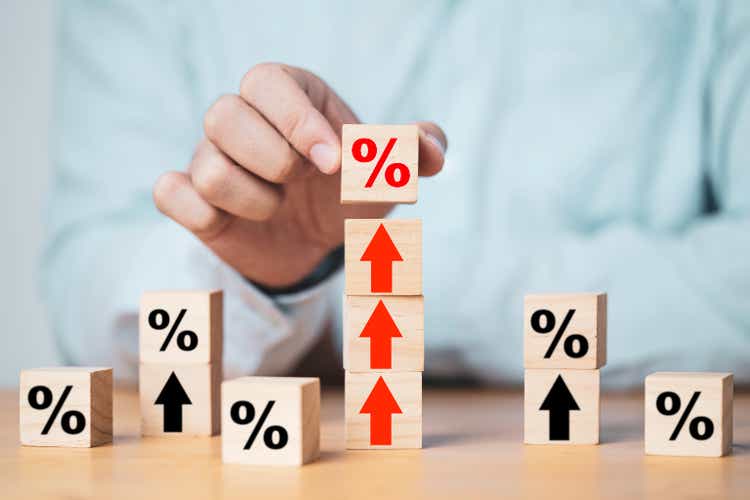Dilok Klaisataporn
Background: I’m at a stage in my life cycle that leads me to want to pass along principles that helped me in the hopes that they will help you. Since I have spent most of my life being a global macro investor, I want to help you invest well by giving you my investment principles, but I don’t want to become your investment advisor – i.e., I want to teach you how to “fish” rather than “fish” for you. I do that by giving you brief posts and reports. I’ve been sharing my posts about the changing paradigm that is resulting from the changing world order (which is explained in my book and video) because what is now happening in the markets is due to these things happening. For reasons described, I believe that we are in a paradigm in which the buying power of financial assets will go down because of a combination of 1) actual price declines when money is tight and 2) inflation when it’s loose.
One of my investment principles that is very relevant now is “don’t always bet on up.” Always betting on up, which is what almost everybody does, is both a mistake for investors and damaging to the economic system. It’s bad for investors because the downs are typically intolerably large and can persist for long periods of time, and it’s bad for the economic system because it produces highly disruptive and unproductive big cycles. If investments and policies were handled better, investors would be better off and the world would be a better place. In this post, I hope to convey how and why.
How Does This Dynamic Work?
Most everyone wants assets and the economy to go up, and most everyone feels richer when the prices of the assets they own rise, even when these assets’ intrinsic values haven’t actually gone up. For example, the prices of most investment assets rose a lot (which people liked a lot) when central banks (most importantly the Fed) created a lot of credit and money. This made debt assets have very unattractive yields for creditors and very attractive borrowing costs for debtors, which led to strong growth and high inflation, which led to central banks tightening, which led to prices falling a lot (which people disliked a lot). That happened even though the intrinsic value of most of these assets didn’t change much. People pay much more attention to prices than intrinsic measures of value like productivity, which is bad for the economy because it is productivity and not prices that raise living standards. I think it would be great if we had a market in productivity and focused more on how to raise it. In any case, this dynamic is what produces the money/debt/economic cycle.
Keep in Mind What Part of the Cycle We Are in and Keep an Eye Out for What Comes Next
Because most everyone wants most everything to go up and because there is a drug called credit that produces both upswings and a byproduct depressant called debt, there is a cycle of accumulating debt liabilities and debt assets that is followed by the reducing of them that happens repeatedly and drives most everything. It is one of the biggest contributors to the “Big Cycle” that I explained much more comprehensively in my book, “Principles for Dealing With the Changing World Order,” and my YouTube video of the same title than I can explain here. Since it’s so important, I urge you to read Chapter 3, “The Big Cycle of Money, Credit, Debt, and Economic Activity,” and Chapter 4, “The Changing Value of Money,” from my book.
While credit can easily produce the ups that people want, it creates the downs when the debts have to be paid back, which most people don’t want. Nobody wants the downs, so central banks typically inject a new dose of stimulus to more than offset the downward effects of the depressing debt. We see this happen all the time. For example, now in Europe, there is a whole lot of debt that’s coming due that would be depressing, especially as there should be a tightening of credit to fight inflation, so policymakers are now arguing among themselves about whether to have the central bank and governments provide more credit and debt to those who are over-indebted to temporarily alleviate the problem. In other words, paying back in hard money is hard (because it causes markets and the economy to go down, which nobody likes), so when it becomes too hard, central banks ease the burdens by printing some money and slipping it to debtors which leads interest rates to be low relative to inflation, so the holders of debt assets lose buying power and the debtors get debt relief.
What should an investor do in light of all this?
Diversify and/or Play the Cycle
Rather than always betting on up, every investor should look at how to diversify one’s portfolio to have some investments that go up when others go down which, if done well, reduces risks more than it reduces returns. While there are some times when even a well-diversified portfolio of assets will go down, it won’t go down as much as an undiversified portfolio, and it won’t stay down because a severe and extended period of bad performance is intolerable. I will get into how to do that at another time.
Also, one can play the cycle, for example, by selling short as well as going long. I want to have no bias to up or down, so that is what I do. However, I caution you against market timing because it is a zero-sum game that even the best pros find challenging.
I will delve into these and other investment principles, and into what’s happening now, in my upcoming posts.
Editor’s Note: The summary bullets for this article were chosen by Seeking Alpha editors.


Be the first to comment